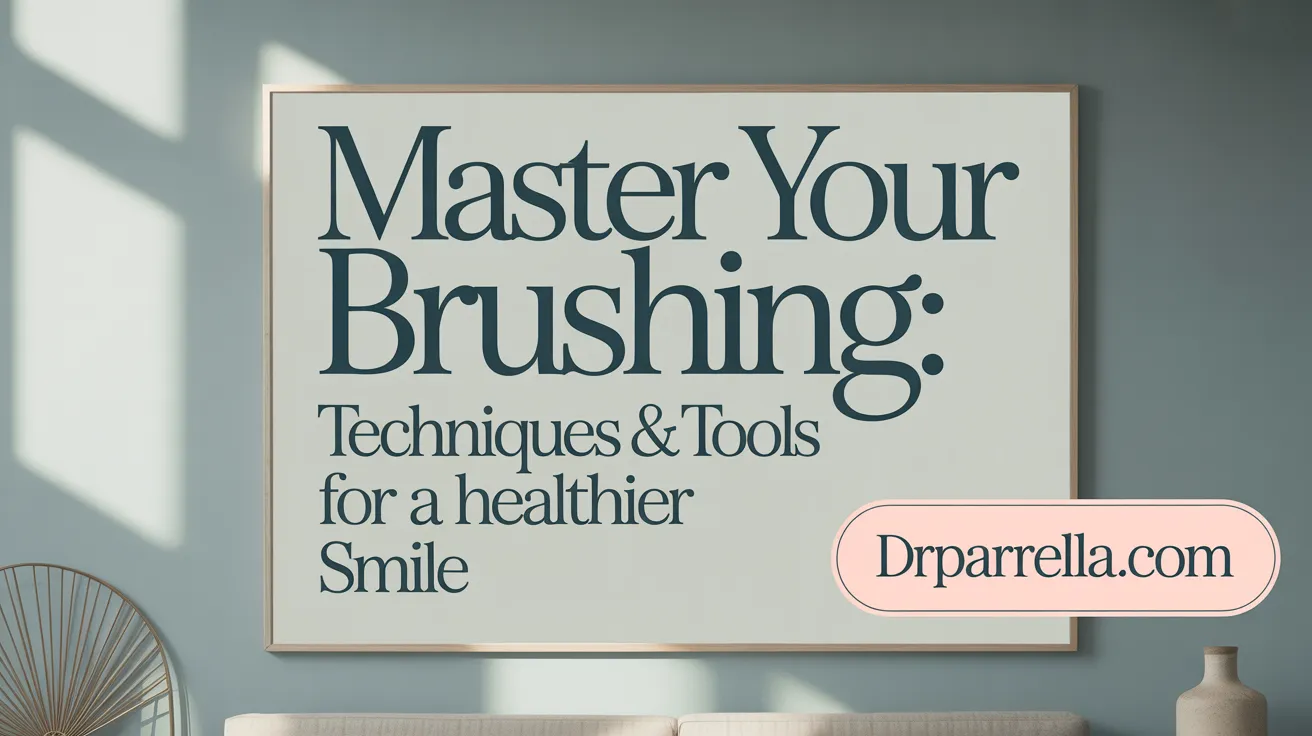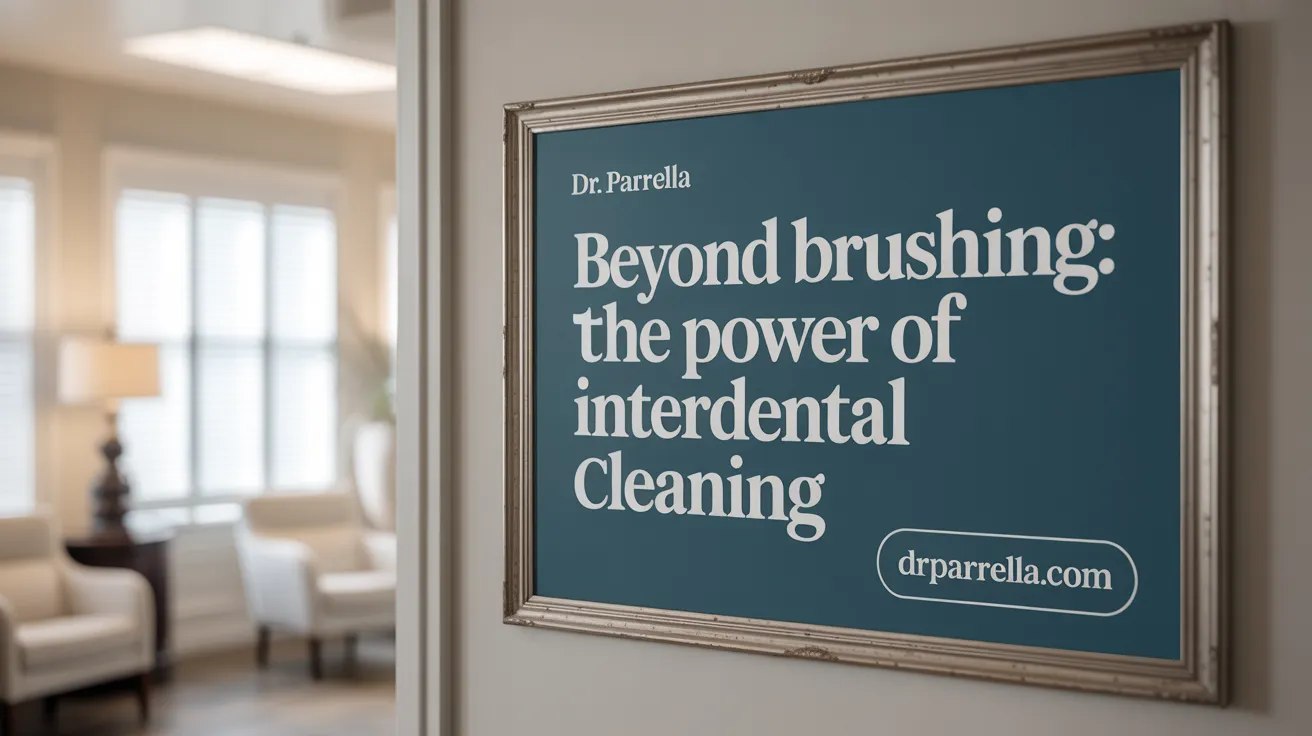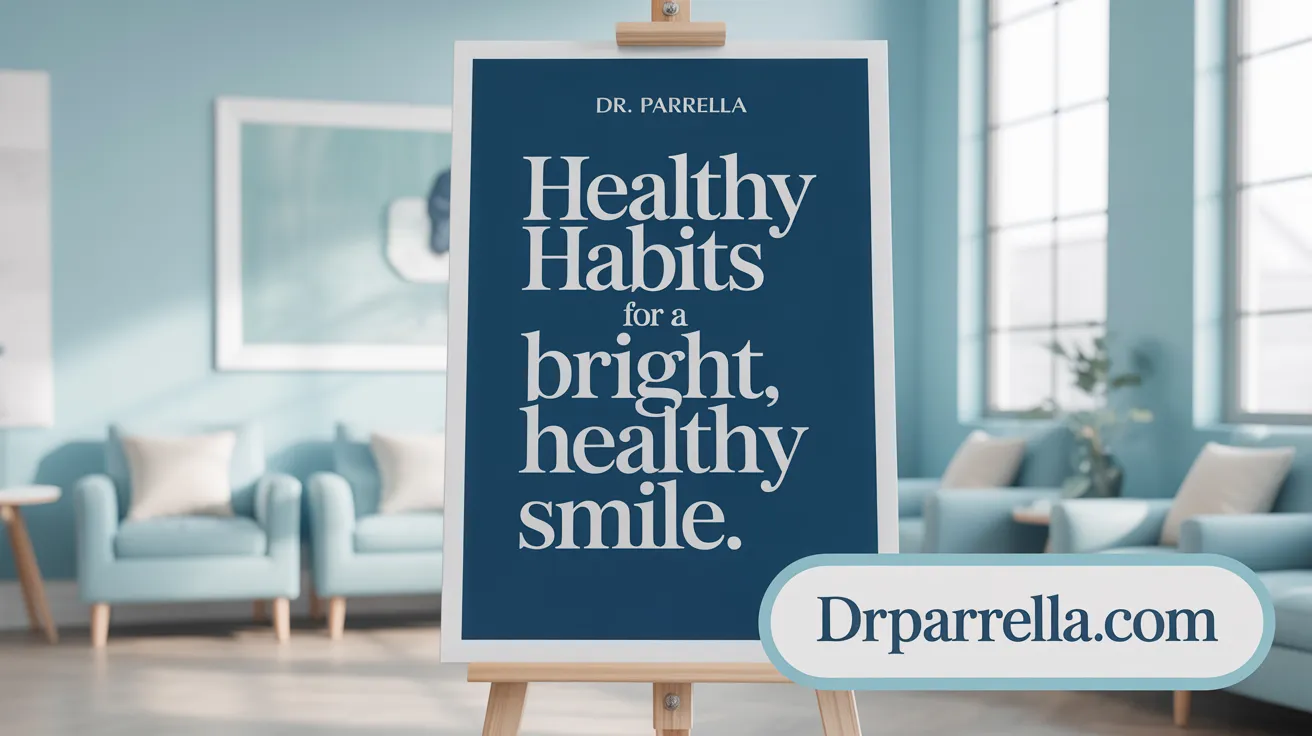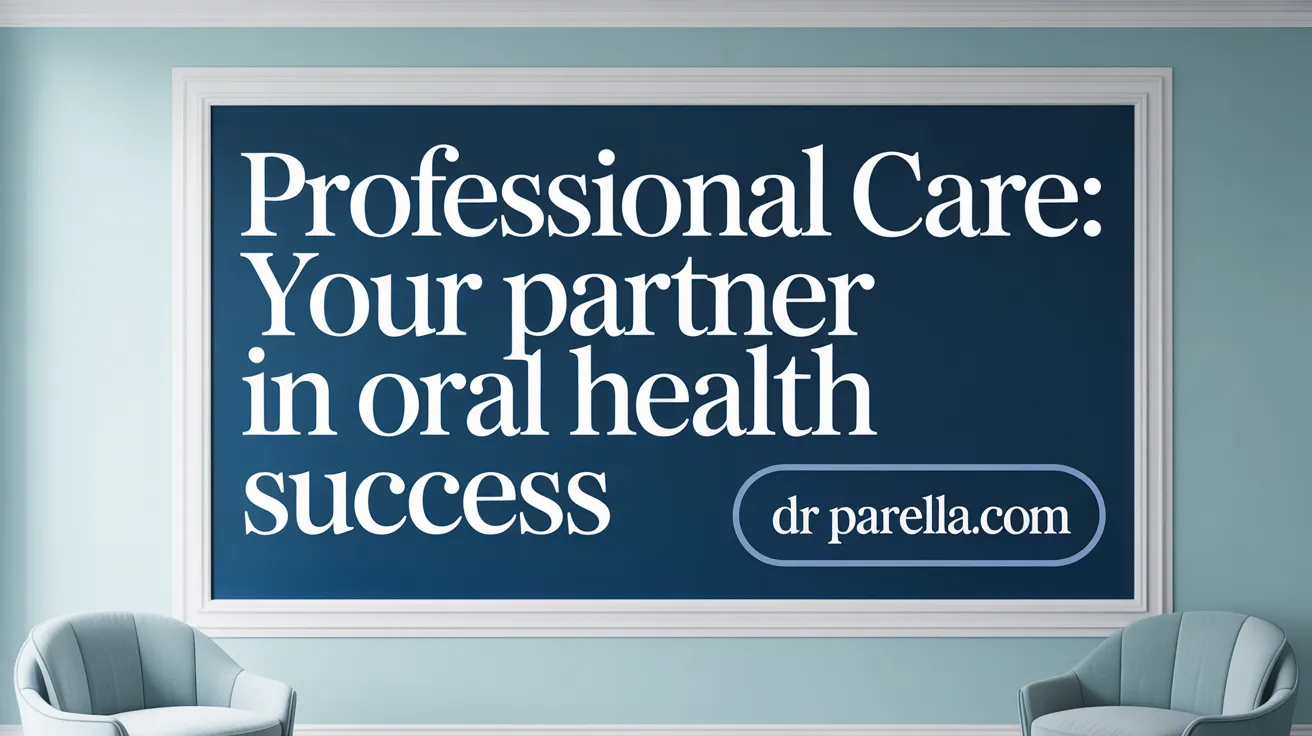Introduction to Home Oral Health Care
Maintaining oral health at home is fundamental to preventing dental diseases and ensuring a lifetime of healthy teeth and gums. Scientific evidence supports a variety of effective tools and techniques that individuals can adopt daily. This article explores the essentials of oral hygiene, recommended practices, and the best tools to optimize oral health, based on authoritative guidelines and research findings.
Brushing Techniques and Tools for Effective Plaque Removal

How often and how long should you brush your teeth at home?
Brushing your teeth twice a day for two minutes each time is ideal for effective plaque removal and reducing the risk of tooth decay and gum disease. Studies support that brushing for two minutes provides a significantly better plaque reduction compared to shorter durations. For more details, see Home oral care recommendations and Brushing teeth twice daily.
What role does fluoride toothpaste play in at-home oral care?
Fluoride toothpaste plays a crucial role by strengthening tooth enamel and preventing cavities. Especially for those at higher risk of dental decay, fluoride concentrations up to 5,000 ppm have been shown to be more effective in halting root caries compared to regular fluoride levels. Learn more about Fluoride toothpaste benefits and High-fluoride toothpaste effectiveness.
What brushing techniques are advised for optimal oral hygiene?
Use a soft-bristled toothbrush and hold it at a 45-degree angle toward the gumline. Brush in gentle, circular motions to thoroughly clean all surfaces of each tooth, including front, back, and chewing surfaces. Don't forget to clean the tongue to reduce bacteria that cause bad breath and promote overall oral health. See Proper brushing techniques and Brushing teeth effectively for comprehensive tips.
Are electric toothbrushes superior to manual toothbrushes?
Both powered and manual toothbrushes are effective if used properly. However, electric toothbrushes can be especially helpful for people with manual dexterity issues, providing consistent pressure and motion that may enhance plaque removal. Further information can be found at Powered vs manual toothbrushes and Electric toothbrush benefits.
How often should toothbrushes or brush heads be replaced?
To maintain optimal cleaning and protect your gums, replace manual toothbrushes or electric brush heads every three to four months, or sooner if the bristles become frayed or worn. See Replacing worn toothbrushes for guidance.
These practices, combined with proper technique and consistent routine, form the foundation of effective home oral care to maintain healthy teeth and gums. Refer to Home oral care recommendations and Proper oral hygiene practices for detailed advice.
Interdental Cleaning: Enhancing Oral Hygiene Beyond Brushing

Why is interdental cleaning important in home oral care?
Cleaning between teeth daily is crucial because plaque and food debris accumulate in interdental spaces where toothbrush bristles can't reach. This accumulation is a major contributor to gingivitis and periodontitis, common gum diseases that can lead to tooth loss if untreated. Studies show that daily interdental cleaning significantly lowers the risk of these conditions, supporting overall better oral health (oral hygiene practices, Daily Oral Hygiene, ADA oral health guidelines).
What interdental cleaning tools are recommended?
While traditional dental floss is widely recommended, there are several effective alternatives tailored for different needs:
- Dental floss: Standard floss is effective for most people to remove plaque and debris (Daily flossing, Using Dental Floss).
- Interdental brushes: Ideal for cleaning larger spaces between teeth, braces, or dental implants (Interdental brushes usage, Interdental device usage, Interdental Brushes Usage).
- Water flossers: Use pressurized water to remove plaque gently; great for individuals with braces, implants, or dexterity issues (Water Flosser Benefits, Flossing and water flossers).
- Floss picks: Convenient tools that can encourage better flossing habits (Selecting the ideal oral care tools).
What is the proper flossing technique?
To floss correctly, use about 18 inches of floss, wrapping the ends around the middle fingers. Gently slide the floss between teeth, curving it into a 'C' shape around each tooth to follow the gumline. Use an up-and-down motion to dislodge plaque without causing gum injury. Avoid snapping the floss, which can damage sensitive gum tissue (Flossing technique, Floss in a C shape, How to floss effectively).
How can alternatives like water flossers and interdental brushes be used effectively?
Individuals with dental appliances or tight spaces may find interdental brushes or water flossers easier to maneuver than floss. These tools help reach plaque in difficult areas and can be more comfortable to use, increasing regularity and effectiveness of cleaning (Water Flosser Benefits, Interdental Brushes Usage, Interdental cleaning aids).
Tailoring interdental cleaning to individual needs
Oral care professionals emphasize customizing interdental cleaning methods based on factors like tooth spacing, dental work, manual dexterity, and personal preference. Patient motivation and education on proper use optimize plaque removal and support long-term periodontal health (Personalized oral care advice, Choosing the right oral care tools, Oral hygiene best practices.
Supporting Tools: Mouthwashes, Tongue Scrapers, and Additional Aids

How can mouthwashes complement home oral care?
Mouthwashes play an important role in boosting oral hygiene alongside brushing and flossing. Antimicrobial mouthrinses containing essential oils or cetylpyridinium chloride help reduce plaque buildup and the risk of gingivitis. Fluoride-containing mouthwashes strengthen enamel and lower the chance of tooth decay, especially in children with elevated caries risk. Choosing alcohol-free mouthwash formulations is beneficial as they help prevent dry mouth, supporting comfort and oral health.
Why is cleaning the tongue important?
The tongue can harbor a significant amount of bacteria and debris that contribute to bad breath and oral health problems. Regular cleaning of the tongue using a tongue scraper or a toothbrush effectively removes this buildup. This practice enhances breath freshness and promotes overall oral hygiene by reducing bacterial load in the mouth.
What home tools can help remove plaque beyond brushing and flossing?
In addition to the common tools, dental picks, scalers, and gum stimulators serve as useful aids to tackle plaque and tartar that brushing and flossing might miss. For instance, professional-style oral care kits include these tools to help remove stubborn deposits and massage gums, which promotes circulation. However, these instruments should be used carefully at home to avoid injury to gums and tooth surfaces.
Using these supplementary tools—mouthwashes, tongue scrapers, and dental picks—can greatly enhance cleanliness and health in your daily oral care routine when chosen and used appropriately.
Diet and Lifestyle Factors Influencing Oral Health

How does diet affect oral health maintenance at home?
A balanced diet plays a crucial role in maintaining oral health. Consuming fewer sugary snacks and acidic drinks reduces the risk of developing dental caries. Sugary foods feed the bacteria that produce acids harmful to tooth enamel. In contrast, eating crunchy fruits and vegetables like apples, carrots, and celery can stimulate saliva production and help mechanically clean teeth. This natural cleansing action aids in the removal of plaque and helps maintain healthy gums (Diet and oral health, Healthy diet for oral health).
Why should tobacco be avoided for oral health?
Tobacco use is highly detrimental to oral health. It increases the risk of gingivitis, enamel erosion, discoloration, and oral cancer. Tobacco diminishes the mouth's ability to fight infection and slows healing, which exacerbates gum disease and other oral health issues. Avoiding tobacco is critical not only to preserve healthy teeth and gums but also to lower the likelihood of serious, sometimes life-threatening, oral conditions (Oral health and tobacco use, Avoiding tobacco for oral health.
What benefits does fluoridated water provide?
Fluoridated water is an effective public health measure that helps reduce the incidence of dental caries. Community water fluoridation strengthens tooth enamel, making it more resistant to decay caused by acids from bacterial plaque. Studies support that areas with fluoridated water show significantly lower levels of tooth decay. This preventive strategy benefits everyone in a community regardless of age or socioeconomic status (Community water fluoridation benefits, Benefits of fluoridated water.
Adopting healthy dietary choices, avoiding tobacco products, and consuming fluoridated water collectively support strong oral health and reduce the risk of dental diseases. These lifestyle factors complement daily oral care routines, creating a foundation for lasting health and a confident smile (Home oral care recommendations, Oral hygiene best practices.
Professional Dental Care: An Essential Complement to Home Routines

Why are routine dental visits important alongside home care?
Regular visits to a dental professional play a crucial role in maintaining oral health beyond what daily home oral care recommendations can achieve. Dentists and hygienists perform thorough examinations that spot early signs of dental issues such as cavities, gum disease, and other oral conditions before they worsen. They also remove hardened plaque known as tartar, which cannot be eliminated by brushing or flossing alone. These cleanings help prevent progression to more serious diseases and keep the mouth healthy (Professional teeth cleaning tools).
What benefits does professional cleaning provide?
Professional cleanings polish teeth and smooth surfaces, reducing plaque buildup and minimizing the chance of decay and periodontal disease. They also allow for early detection of problems ensuring timely treatment. This not only promotes healthier teeth and gums but also fresher breath and a brighter smile (Proper oral hygiene practices.
What risks are associated with at-home orthodontic treatments?
DIY orthodontic treatments or home-based teeth straightening methods are strongly discouraged. Without professional oversight, these approaches carry significant safety risks, including damage to teeth and gums, improper alignment, and potential irreversible harm. Professional orthodontic care ensures treatments are safely planned and executed, safeguarding oral health (Risks of DIY orthodontics.
How frequently should dental visits occur?
Routine dental checkups are typically recommended every six months. However, frequency may be adjusted according to individual risk factors such as existing oral health status, history of dental diseases, or other medical conditions. Personalized scheduling optimizes prevention and treatment outcomes (Routine dental exams and cleanings.
Maintaining regular professional dental care complements daily brushing teeth twice daily, flossing, and lifestyle habits, providing a comprehensive approach to oral health maintenance and disease prevention.
Tailoring Oral Care Tools to Individual Needs and Enhancing Compliance
How do oral care tools vary for different individuals?
Oral care tools should be selected based on a person's age, dexterity, and oral health needs. For children, small-headed, soft-bristled toothbrushes sized appropriately help reach all tooth surfaces safely. Older adults or individuals with manual dexterity challenges often benefit from electric toothbrushes, which provide consistent motions and require less effort. Water flossers serve as an effective alternative to traditional floss for those who find manual flossing difficult.
What technological aids support effective oral hygiene?
Technology plays a vital role in promoting effective home oral care. Brushing timers and smartphone apps help ensure the recommended two-minute brushing duration is met. Some electric toothbrushes come with built-in timers, pressure sensors, and real-time feedback to guide users on brushing technique and duration. These features help reduce plaque buildup and improve gum health by encouraging consistent and thorough brushing.
How does education influence effective home oral care?
Patient education is crucial for maximizing the benefits of oral care tools. Proper instruction on techniques for brushing, flossing, and using interdental devices enhances effectiveness and reduces the risk of gum disease and cavities. Motivation, supported by education, encourages regular and correct use of tools. Tailoring recommendations to patient preferences and abilities increases adherence and leads to better oral health outcomes.
Conclusion: Consistency and Personalized Care at the Heart of Oral Health
Optimal oral health at home requires consistent daily habits, the right selection of tools, and awareness of diet and lifestyle factors. Brushing thoroughly twice a day with fluoride toothpaste, complementing with effective interdental cleaning, and using supportive aids like mouth rinses and tongue scrapers form the backbone of preventive care. Regular professional dental visits ensure removal of buildup that at-home care cannot address and help tailor recommendations to individual needs. Embracing technological aids and personalized tool choices facilitates better compliance and outcomes. Together, these strategies foster not only a healthy smile but contribute significantly to overall well-being.
